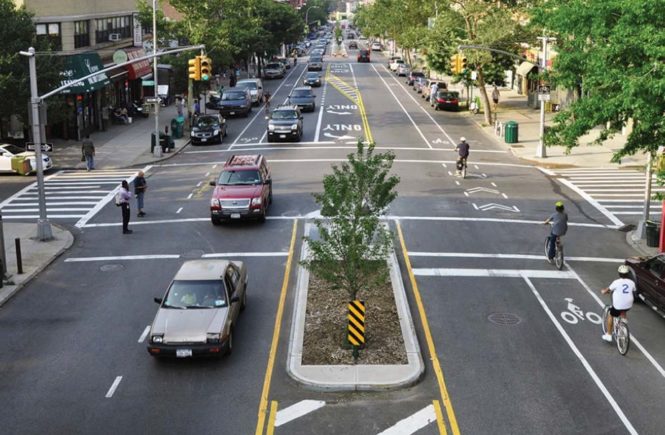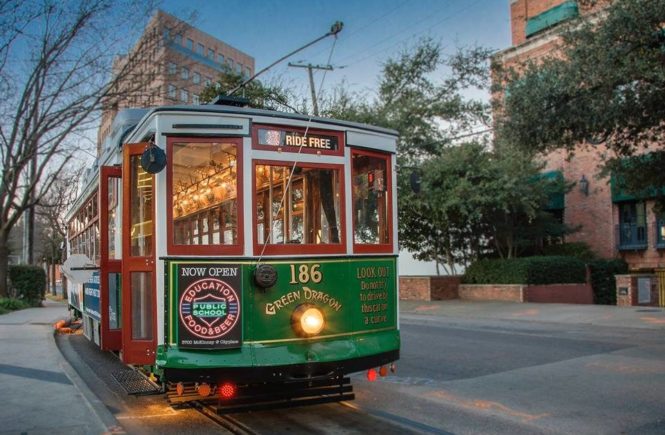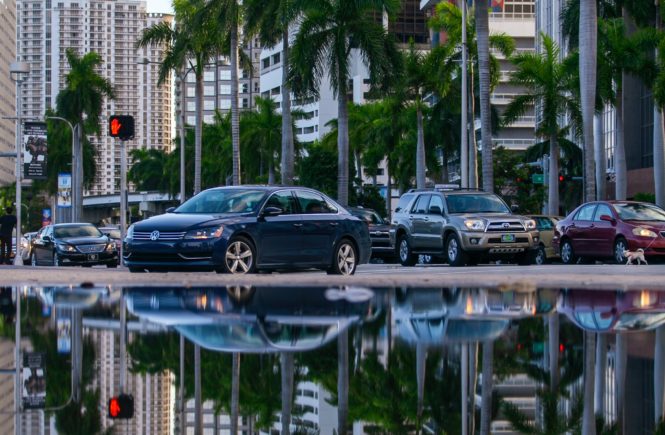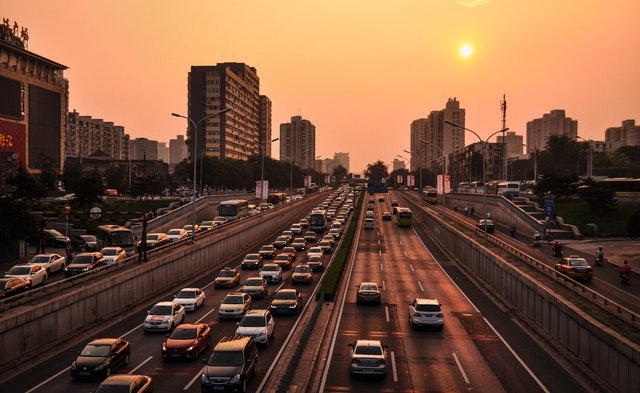Not enough credit is given to 4 to 3 lane road diets. They can be a relatively low cost way to calm traffic, reduce crashes and provide bicycle lanes all in one resurfacing project.
4 lane roads attempt to accommodate higher traffic volumes and left turning movements by making inner traffic lanes de facto left turn lanes. This creates multiple traffic conflicts as through traffic and turning vehicles have to jockey within this inner lane. 4 lane roads also create multiple threat crash risks for pedestrians and generally higher traffic speeds. A 2014 article explained the issues with 4 lane roads in detail and created a lot of discussion about conversions in Minnesota. Many of the same things can be said in cities across America: Better utilization of right of way on 4 lane cross sections can create safer streets which are more accessible to all road users.
Re-striping a roadway with 2 bi-directional traffic lanes and a middle turn lane creates a dedicated, predictable space for left turns while freeing up right of way for bike lanes, wider sidewalks, pedestrian refuge islands, or on-street parking. FHWA has put out a comprehensive guide that explains many benefits of these conversions.
| Category | Problem | Rationale |
|---|---|---|
| Safety | Rear-end crashes with left-turning traffic due to speed discrepancies | Removing stopped vehicles attempting to turn left from the through lane could reduce rear-end crashes |
| Sideswipe crashes due to lane changes | Eliminating the need to change lanes reduces sideswipe crashes | |
| Left-turn crashes due to negative offset left turns from the inside lanes. | Eliminating the negative offset between opposing left-turn vehicles and increasing available sight distance can reduce left-turn crashes | |
| Bicycle and pedestrian crashes | Bicycle lanes separate bicycles from traffic; pedestrians have fewer lanes to cross and can use a refuge area, if provided | |
| Operational | Delays associated with left-turning traffic | Separating left-turning traffic has been shown to reduce delays at signalized intersections |
| Side street delays at unsignalized intersections | Side-street traffic requires shorter gaps to complete movements due to the consolidation of left turns into one lane | |
| Bicycle operational delay due to shared lane with vehicles or sidewalk use. | Potential for including a bike lane eliminates such delays | |
| Other | Bicycle and pedestrian accommodation due to lack of facilities | Opportunity to provide appropriate or required facilities, increasing accessibility to non-motorized users |
| Aesthetics | Provisions can be made for traversable medians and other treatments | |
| Traffic calming | Potential for more uniform speeds; opportunity to encourage pedestrian activity | |
| Adapted from Kentucky Transportation Center’s Guidelines for Road Diet Conversions3 | ||
Best of all, many of these benefits can be created with re-striping only. Keeping curbs in place is a great cost saver and makes 4 to 3 lane road diets more practical for a greater number of cities.
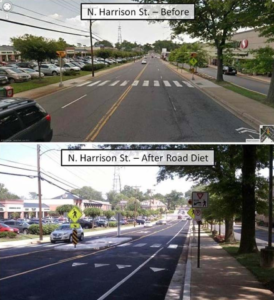 Many conversions have already been studied. Significant crash reductions have been recorded with notable reductions in excessive (above speed limit) traffic speeds. Surveys show livability and pedestrian comfort benefits and some economic development/vacancy rate benefits, too. Project locations should be carefully considered though as road diets aren’t a panacea. Traffic volumes, crash types, adjacent land uses, and the location of the project within the larger road network all need to be considered during the planning phase.
Many conversions have already been studied. Significant crash reductions have been recorded with notable reductions in excessive (above speed limit) traffic speeds. Surveys show livability and pedestrian comfort benefits and some economic development/vacancy rate benefits, too. Project locations should be carefully considered though as road diets aren’t a panacea. Traffic volumes, crash types, adjacent land uses, and the location of the project within the larger road network all need to be considered during the planning phase.
The traffic threshold for 4 to 3 lane conversions varies by city but is usually around 20,000 vehicles a day. The good news is that many existing 4 lane roads are significantly under capacity and were designed based on (over-estimated) 2%-3% traffic growth rates per year which never materialized. Assuming the traffic threshold is met, conversions can provide benefits to rural, suburban and urban mixed use streets at a fraction of the cost of full reconstruction projects.

